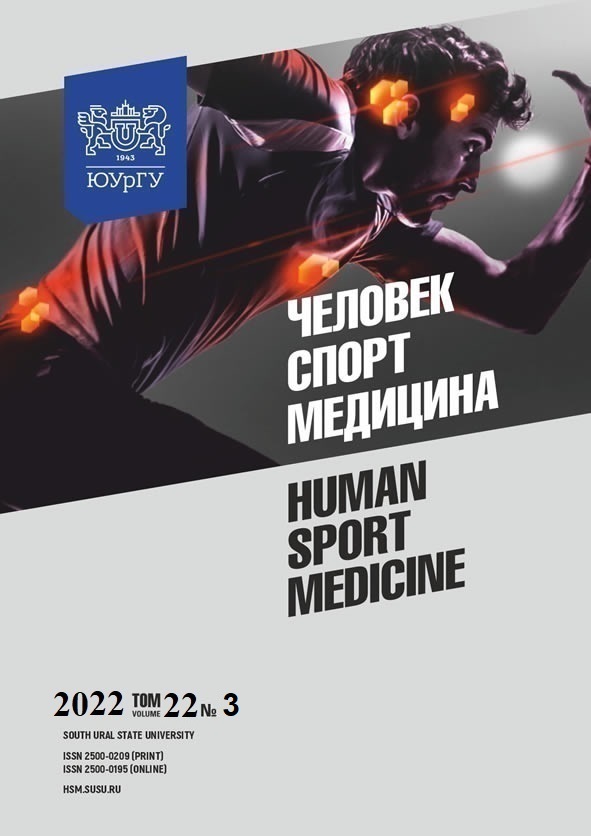THE DYNAMICS OF CARDIAC PUMPING PERFORMANCE DEPENDING ON RESPIRATORY CYCLES AND INCREASING LOAD
Abstract
Aim. The paper aims to divide athletes into groups with respect to their respiratory cycles; to consider changes in cardiac pumping performance depending on respiratory cycles and load levels. Materials and methods. The study involved male athletes divided into one of the following groups: bradycardial (n = 23), normocardial (n = 27), and tachycardial (n = 9) respiratory cycles. An ergometer with gradually increasing load was used (16 minutes; 4 minutes for each load level). Cardiac pumping performance was recorded at rest and exercise (heart rate and stroke volume). Cardiac output was calculated using the following formula: HR×VOC. Results. The highest heart rate values at baseline and up to 200 W were found in the normocardial group, and the lowest ones – in the bradycardial group. The threshold of an adequate hemodynamic response was recorded at 50 and 100 W in the bradycardial and normocardial/tachycardial groups, respectively. No significant differences in terms of cardiac output were observed between groups at 200 W. Conclusion. Increased cardiac output values in the normocardial group were associated with heart rate measures, while in the bradycardial group cardiac output depended on stroke volume. Therefore, it can be concluded that there are complex adaptive relationships, which explain a variety of observed responses.
References
References on translit
Copyright (c) 2022 Human. Sport. Medicine

This work is licensed under a Creative Commons Attribution-NonCommercial-NoDerivatives 4.0 International License.















